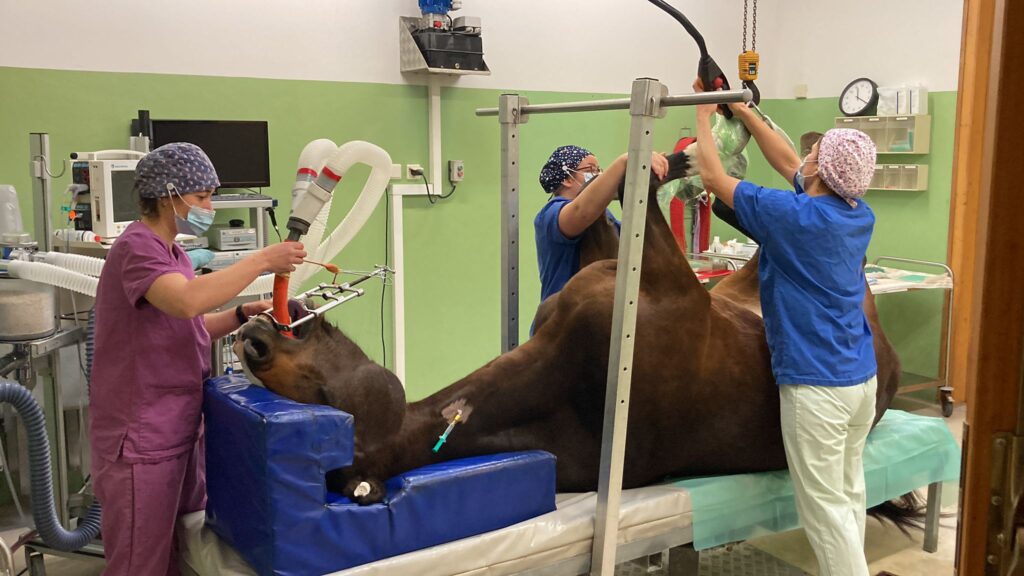Surgery
In addition to orthopedic surgery, other operations are also part of our range of services. These include for example
Minimally invasive surgery:
- Arthroscopies
- Bursoscopies
- Tendovaginoscopies
Bone surgery:
- Osteosyntheses of all types
- Care of joint cysts
Hoof surgery:
- Hoof cancer care
- Horn columns
Soft Tissue Surgery:
- Tumor operations
- Castrations
- Hernia care
- Tendon splitting
- Severing of the fetlock ring ligament
- Fasciotomies
- Perivascular sympathectomy
- Cutting the support ligaments
- Laryngeal Pipe Surgery (Guest Surgeon)
- Kopper operations (guest surgeon)
Ophthalmic surgery:
- Bulb extirpation
- Vitrectomy (guest surgeon)
- Entropium supply
General Surgery:
- Care of all kinds of injuries
- Dental surgery, buccotomy if necessary
Surgical laser
The surgical laser is used in various cases – both for surgical procedures and for (subsequent) promotion of wound healing.
Anesthesia
Anesthesia (also called general anesthesia) enables diagnostic and therapeutic procedures (operations) to be performed by rendering the patient unconscious and eliminating the sense of pain.
Prior to a planned surgery, the horse’s health condition is assessed. Preliminary examinations are performed the day before surgery and consist of a general physical examination as well as a blood test and a fecal examination. In addition, pre-existing conditions and medications that will be given on a permanent basis will be inquired about. The owner is informed in detail in writing about the risks of the anesthesia and the procedure itself.
The anesthesia itself consists of four phases:
- Sedation of the fasting horse in the box (premedication) for stress reduction and calmer induction of anesthesia.
- Placement of the horse in the stall in front of the operating room (induction of anesthesia)
- Maintenance of anesthesia by means of anesthetic gas (isoflurane) and a muscle-relaxing (=muscle-relaxing) drug (combined anesthesia)
- Recovery phase: The anesthesia is drained and the horse is gently positioned in the padded recovery box with the help of a tail and neck lunge.
During anesthesia, the horses are constantly monitored by one of our anesthesiologists. Vital parameters (heart rate, respiratory rate, circulation), reflexes and depth of anesthesia are constantly checked and documented in an anesthesia protocol. In addition to non-apparatus monitoring, apparatus monitoring is also available:
- ECG: monitoring of heart rate and heart rhythm
- Blood pressure measurement: Blood pressure is measured directly in an artery
- Capnography: measurement of oxygen, CO2 and anesthetic gas concentrations in the respiratory air.
- Blood gas analysis: measurement of CO2 and oxygen concentration in the blood

